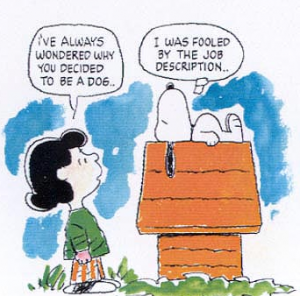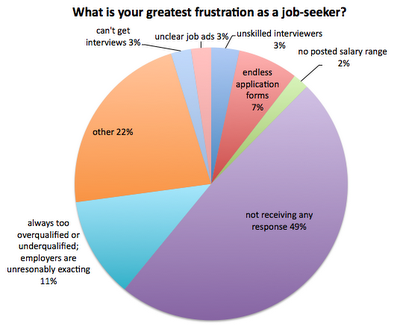 Let’s face it, most job postings suck. Learning how to write job postings isn’t difficult. Typically, job postings are MBA-speak nightmares that give little insight into the day-to-day goings on of a given role. Here are a few tips for creating engaging job posts that actually do their job of attracting great talent and weeding out those that are a poor fit.
Let’s face it, most job postings suck. Learning how to write job postings isn’t difficult. Typically, job postings are MBA-speak nightmares that give little insight into the day-to-day goings on of a given role. Here are a few tips for creating engaging job posts that actually do their job of attracting great talent and weeding out those that are a poor fit.
How to write job postings (Create Obstacles)
Is it strange to begin a discussion on bringing people in with advice creating obstacles? Influence expert Robert Cialdini confirms a truth that savvy daters have leveraged since time immemorial, “playing hard to get works.†The simple truth is, people want what they can\’t (easily) have and as Groucho Marx put it, the teams we most want to be a part of would scarcely have us as members. So what does all of this mean for job postings? Creating reasonable barriers to entry has two important benefits, it weeds out the unmotivated and ill-fitting, and it increases the perceived cache of the role.
There are a number of ways to create barriers to entry that inform the hiring process. Request a cover letter addressing specific competencies, require a questionnaire comprised of questions that measure cultural fit, and vet potential hires using an organizational psychologist (ahem!!!), to name but a few ideas. Only candidates that pass these initial screenings will move on to in-person interviews, and you can bet that they will arrive with a sense of accomplishment and honor at being considered for employment. What’s more, this process allows you to measure motivation, communication skills, and cultural fit, all while increasing the perceived value of your organization.
How to write job postings (Advertise Culture)
The preponderance of job postings follow the same boring formula: ambiguous job title, bland description of duties, and a vague recounting of qualifications. Ideally, a candidate should be able to look at a job posting and work backwards to make inferences about organizational culture. Further, this culture should appeal greatly to some applicants and cause others to run for the hills, thereby saving you the time of interviewing those who are not well-positioned to succeed. You need to define corporate culture for candidates.
Appleton Learning, a client of mine, has recently taken to including a “Meet an Employee†section on all of their employment ads. These short vignettes provide a window into the personal and professional life of an Appleton team member, and all team members are given the opportunity to enjoy their 15 minutes of fame on a job posting. This change gives the posting an added dimension of personality and warmth that reflects Appleton\’s corporate values of personal development and almost familial support. It also sends the message that applicants will be appreciated holistically and allowed to shine once coming aboard. This specific approach is not indicated for all businesses and is likely too saccharine for some grizzled pragmatists. But inasmuch as grizzled pragmatists are a poor fit for this education startup, mission accomplished. And if all else fails, you need to know how to read a resume for culture fit.
How to write job postings (Get Behavioral)
Raise your hand if you have poor attention to detail, don\’t “play well with othersâ€, and lack initiative. Stupid questions, right? Your applicants think so too. That being the case, why are we including vague aspirational qualities with “Sunday School answers†that do not improve the predictive power of our selection process? Everything you hope to determine lives behaviorally in your applicants in a way that is measurable.  It is your job to determine what it looks like in the professional lives of those you recruit.
Take initiative for example; Â no job applicant in their right mind is going to admit to lacking drive. So, what does drive look like for your purposes? Is drive a history of organizational ascension? Is drive a track record of measurable innovation? Determine the specific, measurable evidences of the attributes you seek and exclude those who do not stack up. Do not ask about things that are better experienced! Talking about drive does not measure drive, it measures ability to talk. As you look for ways to construct job postings that are measurable behaviorally, you will improve your ability to avoid slick con-(wo)men who talk a good game but have little actual substance. Learn more about SmartRecruiters, the tool I use for recruiting and applicant tracking.
Today’s guest post is by my new buddy and all-around great guy Dr. Daniel Crosby (@incblot on Twitter). Feel free to check out his business where he does performance consulting.




